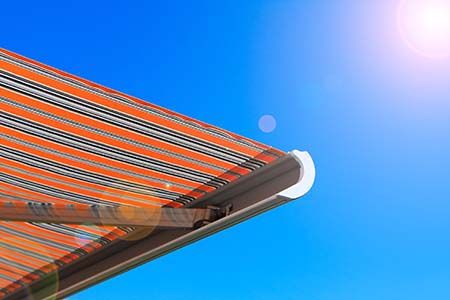
UV rays, we all know the harmful effects they can have on humans and our skin. But did you know that the sun can damage your fabrics? Often times, we forget that shading our homes and protecting it from the sun’s powerful rays can help prolong the life of furniture. This is especially true for outdoor furniture and shade structures like shade sails and awnings.
Here are some ways the sun can damage your fabrics:
- Discoloration
- Fading
- Cracking/Tearing
- Brittleness
But why does this happen? According to scientists, photo-degradation – the term used for sun damage – alters materials and the appearance of materials through the combined effects of sunlight and air. Typically, you would see this happen to things like paintings and photographs.
In fabrics, photo-degradation can have drastic effects. For example, in awnings or patio furniture, sun damage can cause the fabric to dry out, fade, and even crack. The damage reduces the life of your shade structure or your furniture. Thus, it is important to use fabric that is UV ray resistant and color and fade resistant as well.
There are a variety of UV ray resistant and color and fade resistant fabrics for awnings, but not all are created equally.
Herculite’s awning fabrics in particular are designed to withstand the elements. The fabrics are engineered to be not only UV ray resistant but water resistant and even mold and mildew resistant.
Now that you know a little more about sun damage, learn about what factors you should consider when determining awning fabric quality by downloading our guide, "Five Factors to Consider when Determining Awning Quality"
